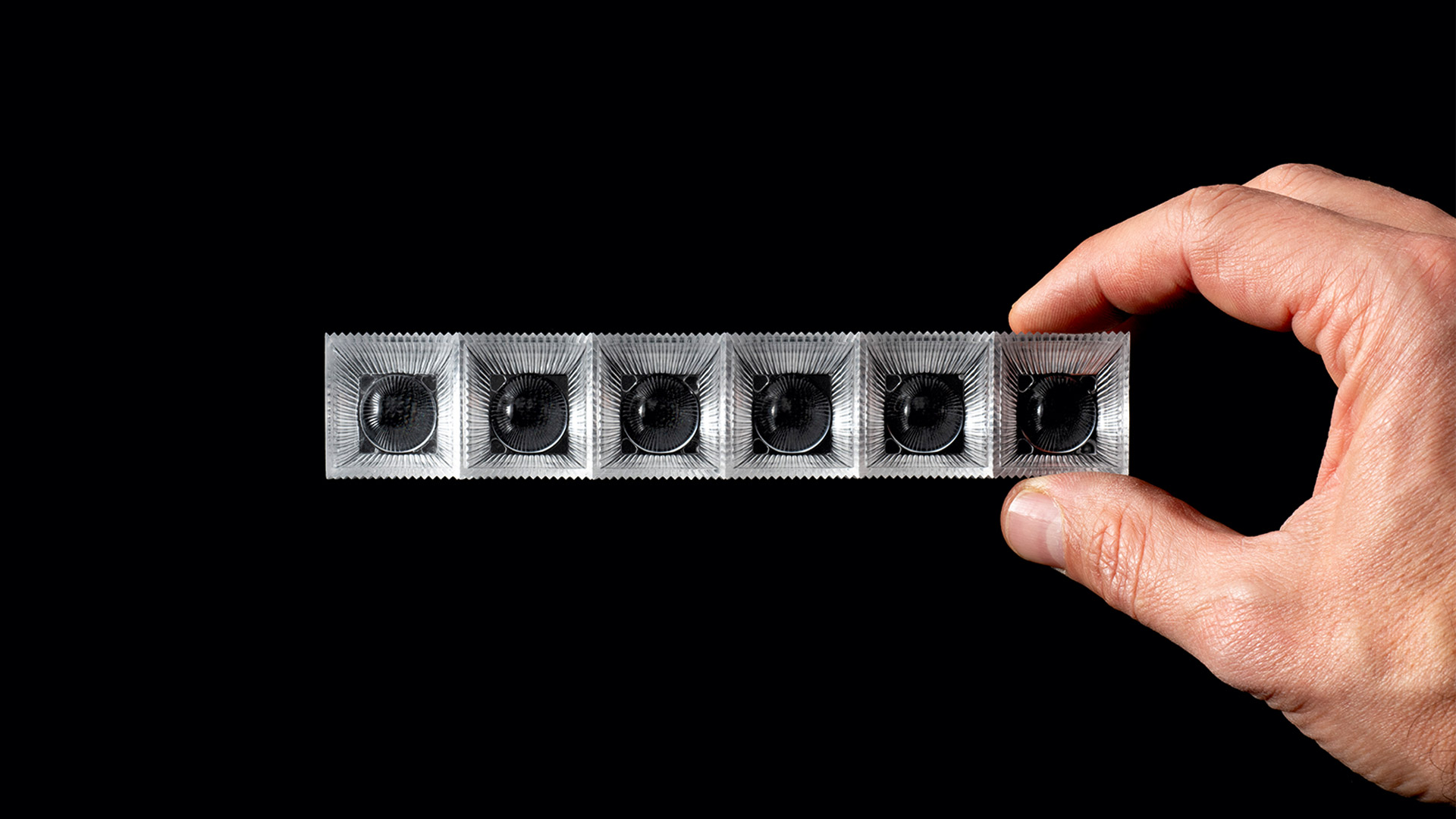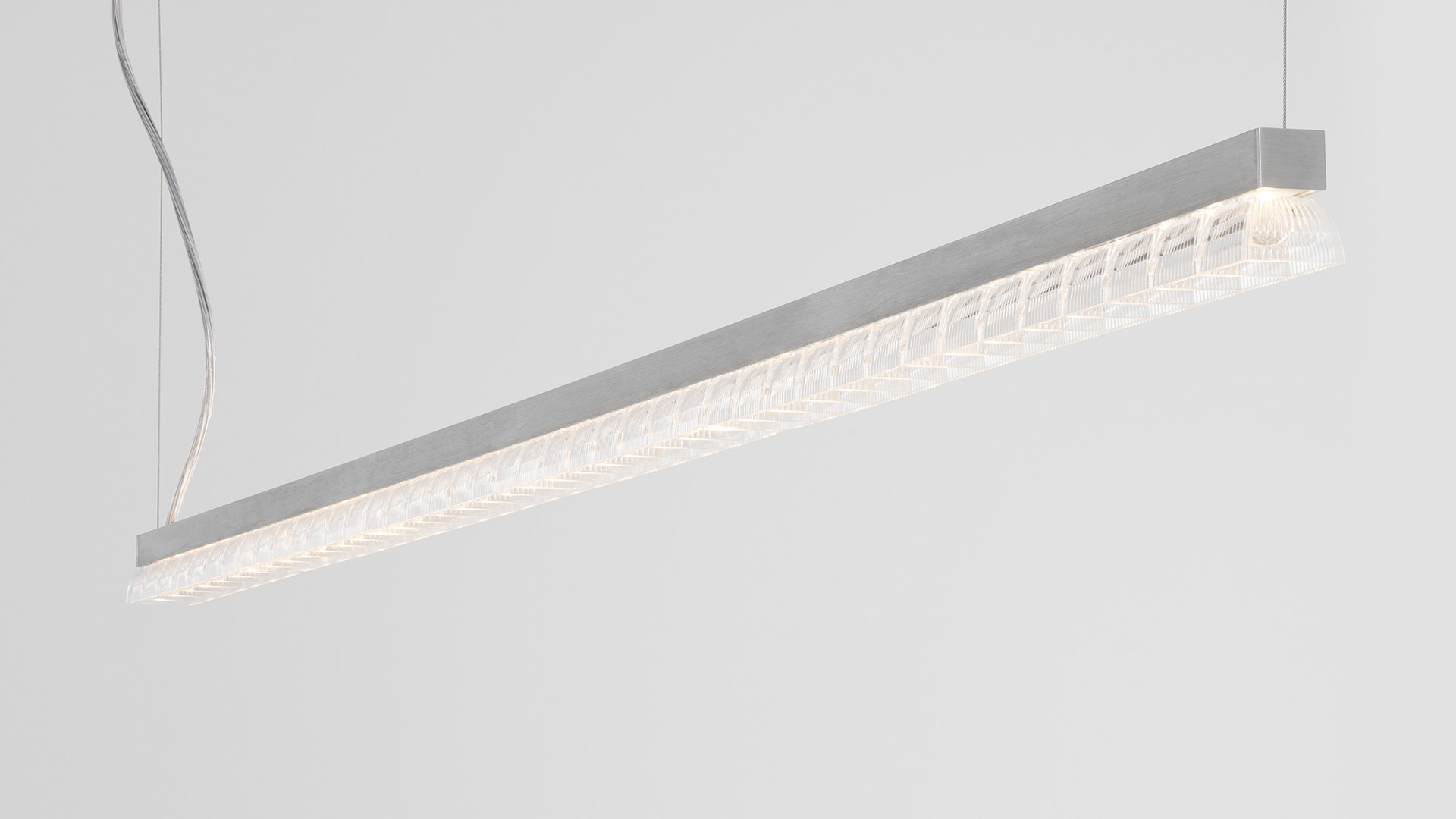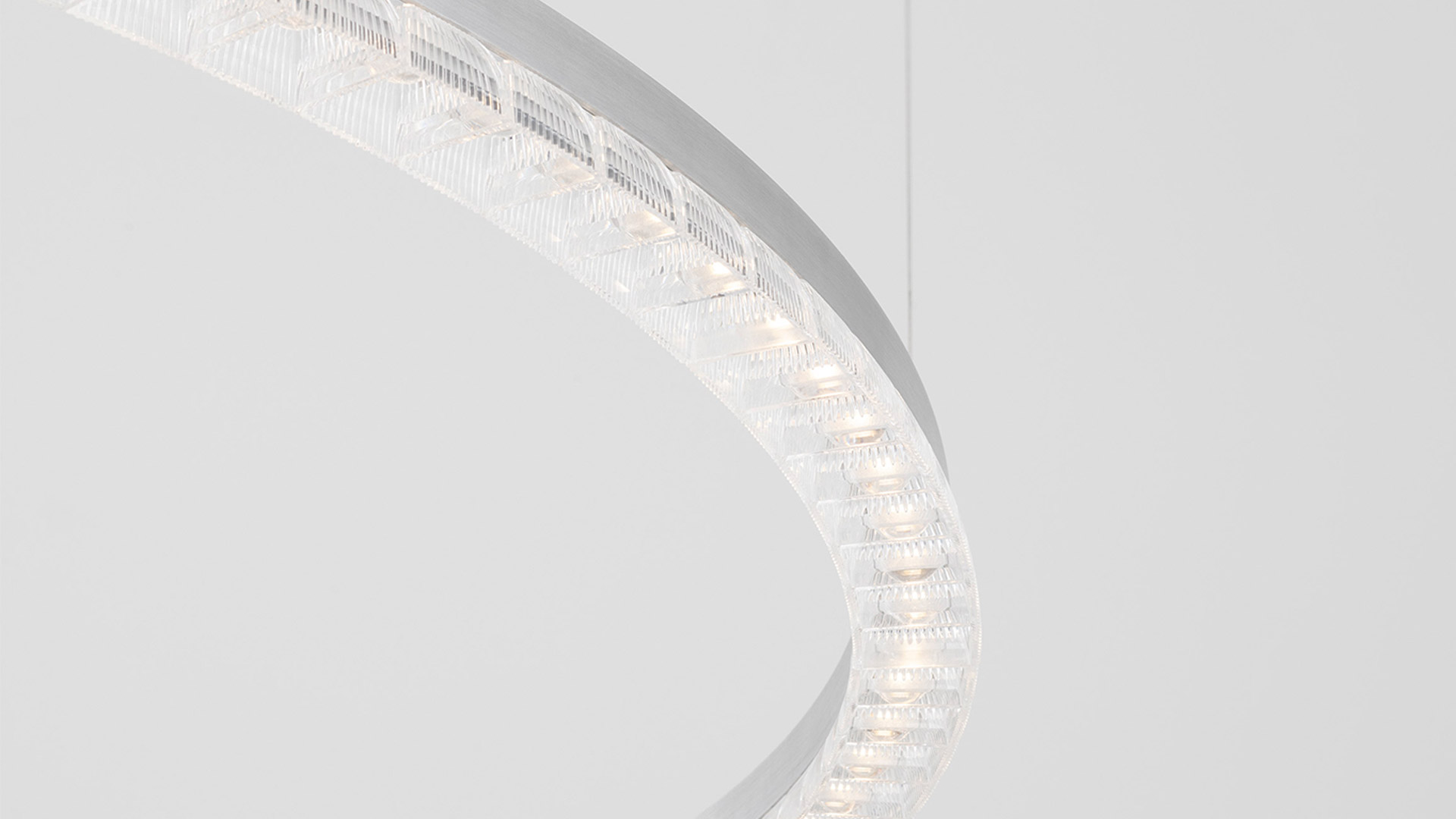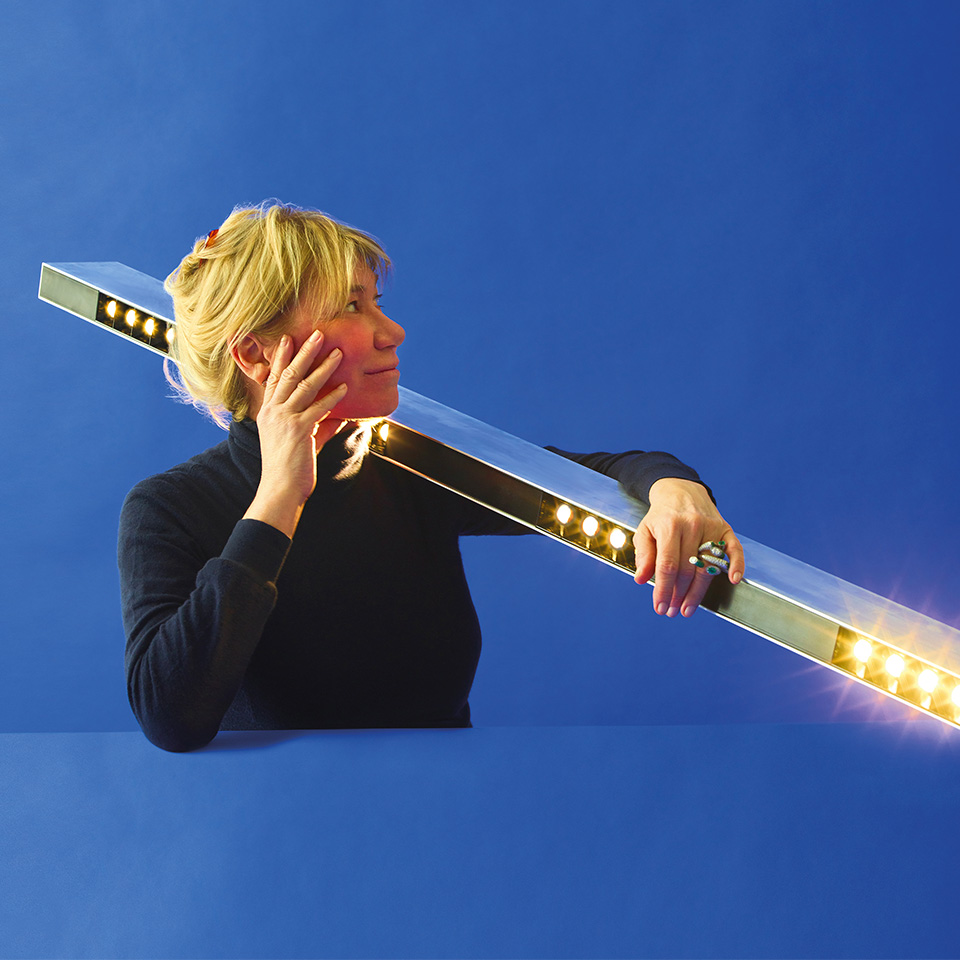Somnĭum is an innovative lighting system that seamlessly integrates optics, structure, and production into a single, refined solution. At its core lies a patented optical cell designed for maximum efficiency and visual comfort, achieving UGR<16 for a glare-free experience.
Somnĭum’s optical technology merges the lens and antiglare into a single transparent component, eliminating unnecessary elements and transforming the louvre from an accessory into an integral part of the system. The result is a soft, controlled light that spreads harmoniously with both direct and indirect emission, ensuring a natural and comfortable visual perception. Thanks to its linear and curved modules, Somnĭum adapts flexibly to any environment, creating efficient and elegant lighting configurations.



































